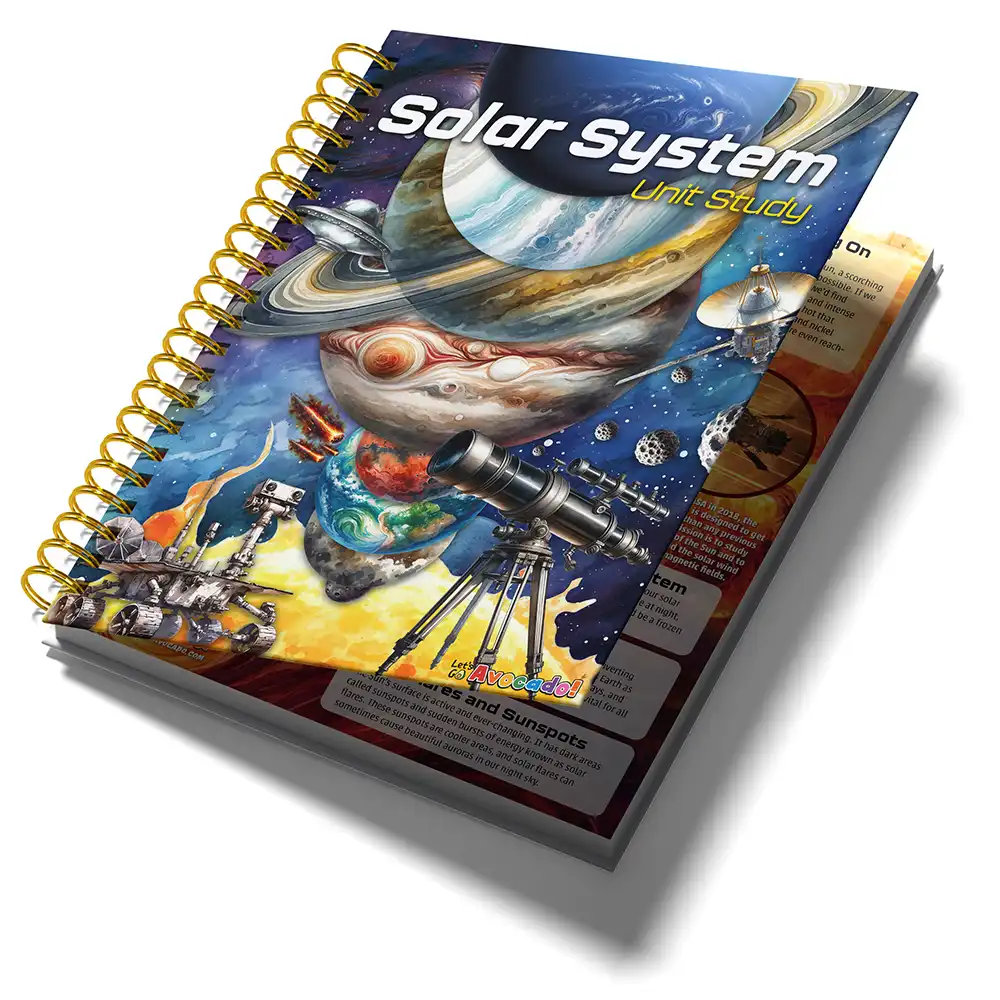This page may contain affiliate links.
Read our disclosure and privacy policy here.
Welcome to a journey through space to learn about Saturn, the most magnificent planet in our solar system. Have you ever wondered about the giant with the beautiful rings that twinkle in our night sky? Saturn is not just any planet; it’s a world of mystery, with stunning rings and a family of moons that make it unique. Let’s dive into some fascinating facts about Saturn that will amaze you!
Table of Contents
The Ringed Giant: Fun Facts About Saturn For Kids
The Structure Of Planet Saturn
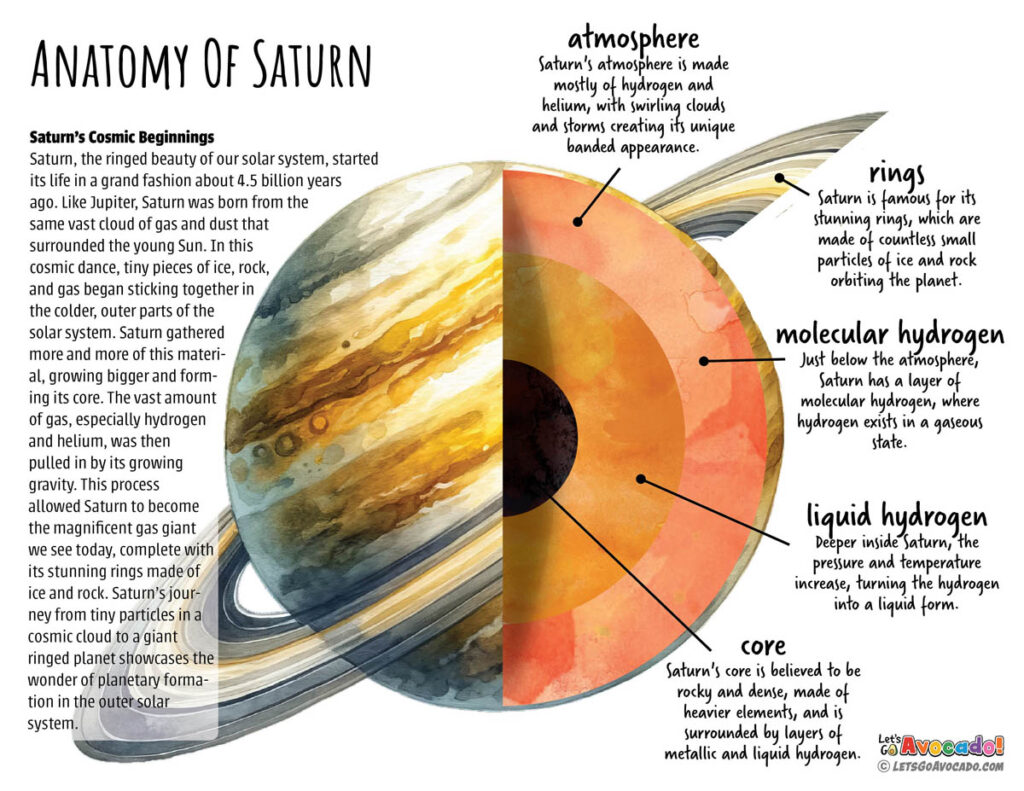
This anatomy poster is available in our Solar System Study Unit. Check our downloads section for more details.
The Atmosphere of Saturn
Did you know Saturn is surrounded by a thick atmosphere? It’s made mostly of hydrogen and helium, just like a giant gas balloon! This layer is where we see those beautiful yellow and gold bands, and sometimes, huge storms bigger than Earth form here. Imagine looking up and seeing a storm that can swallow our whole planet!
The Rings of Saturn
One of the most fun facts about Saturn is its stunning rings. They’re not solid like a CD; instead, they’re made of billions of ice chunks, some as small as snowflakes and others as big as houses! These pieces are leftovers from comets, asteroids, or even moons that broke apart before they could reach the planet.
Down to The Core
Beneath its gassy atmosphere, Saturn has a core that’s hot and rocky. It’s surrounded by layers of metallic hydrogen, which is hydrogen that acts like a metal because of the intense pressure and heat. Think of the core as a super-hot rock, surrounded by a sea of special hydrogen that you won’t find anywhere on Earth.
The Rings of Saturn
A Gas Giant with Mighty Winds
Saturn's Many Moons
Did you know Saturn has more moons than any other planet in our solar system? With 82 confirmed moons, Saturn’s family keeps growing as astronomers discover more. Among these moons, Titan stands out for being larger than the planet Mercury itself! Imagine looking up into the sky and seeing more moons than you could count on your fingers and toes. Here are a few of the better known ones.
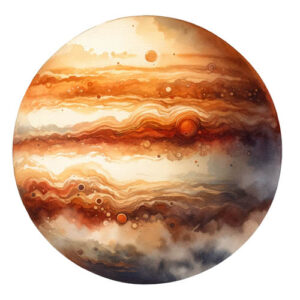
Titan: The Mighty Moon
Titan: The Mighty Moon
Did you know Titan is the largest of Saturn’s moons and even has its own atmosphere? That’s right! It’s the only moon in our solar system with thick clouds, and beneath them, scientists believe there are lakes and rivers, but not of water—of liquid methane and ethane. Imagine sailing on a lake that’s not made of water but gas!
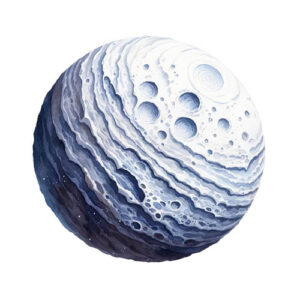
Tethys: Saturn’s Bright Moon
Tethys: Saturn’s Bright Moon
Tethys is one of Saturn’s fascinating moons, easily spotted by its icy surface that reflects sunlight, making it shine brightly. It’s home to a massive canyon called Ithaca Chasma, which is more than 1,000 miles long! Tethys also shares its orbit with two smaller moons, showing how space can have its own unique families.
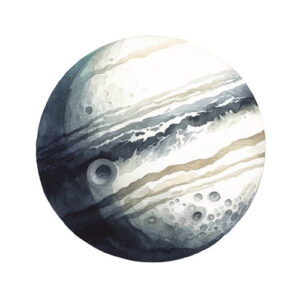
Iapetus: The Yin-Yang Moon
Iapetus: The Yin-Yang Moon
Iapetus is a moon with two faces: one dark and one light. It’s as if this moon couldn’t decide what to wear! The dark side is covered in dust from another of Saturn’s moons, while the bright side reflects sunlight like snow. It’s the yin and yang of Saturn’s moons, showing us that space is full of surprises.
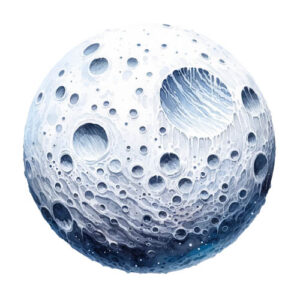
Rhea: Saturn’s Frozen Archive
Rhea: Saturn’s Frozen Archive
Rhea might look just like another icy ball, but it’s covered in craters and has its own faint rings! Yes, Saturn isn’t the only one with rings in its family. Rhea’s surface tells the story of many space rocks that have come to say hello over the years, making it like a history book of the cosmos.
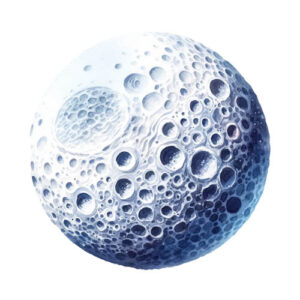
Dione: A Moon with a View
Dione: A Moon with a View
Dione is another icy satellite of Saturn, but with a twist—it has wispy streaks across its surface. These are actually ice cliffs where material from the moon’s interior has oozed out. If we could stand on Dione, we might see Saturn filling up the sky, offering the most breathtaking view you can imagine.
Exploring Saturn: A Journey to the Ringed Planet
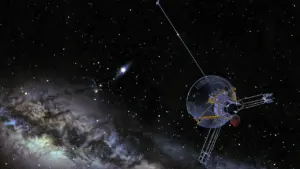
Pioneer 11 was the first spacecraft to fly by Saturn. Launched in April 1973 and reached Saturn in 1979. It carried a golden plaque which tells the story of where it came from, in case it is found by an alien civilization far into the future.
Why Saturn Matters
Studying Saturn and its moons gives scientists clues about how planets form and evolve. By exploring Saturn, we learn not just about this distant world, but also about our planet and the solar system’s history. Saturn’s diverse moons, with their own unique environments, might even help us answer the big question: are we alone in the universe?
Saturn in Cultural Mythologies and Folklore
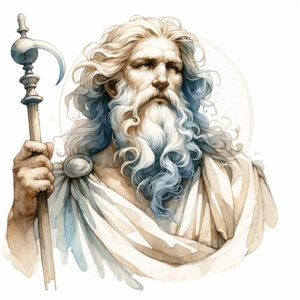
The planet Saturn was named after the Roman god Saturn, the father of Jupiter. He is similar to the Greek god Kronos, king of the Titans.
Saturn is named after the Roman god of agriculture and time. In Roman myths, Saturn was known for his powerful rule long before the gods we often hear about, like Jupiter. Saturn’s time as a god was considered a golden age where everyone was happy, and there was plenty of food. This god also had a Greek counterpart named Kronos, who was known for being the king of the Titans. The planet Saturn, with its magnificent rings, shares its name with this ancient god, reminding us of stories from long ago about time, harvest, and tales of the gods that ruled the earth and skies.
Fun Facts About Saturn
- Saturn’s Rings: Saturn is famous for its beautiful rings. These rings are made of ice, dust, and rocks. Some of these pieces are as small as a grain of sugar, while others are as big as mountains!
- It Could Float: If you had a bathtub big enough, Saturn would float in it! That’s because Saturn is mostly made of gas, and it’s less dense than water.
- Fastest Winds: Winds on Saturn can reach speeds of up to 1,800 kilometers per hour (about 1,100 miles per hour). That’s much faster than the strongest hurricane winds on Earth!
- Many Moons: Saturn has 82 known moons, with Titan being the largest. Titan is even bigger than the planet Mercury. It’s so big that it has its own atmosphere, which is very rare for a moon.
- Short Days, Long Years: A day on Saturn (the time it takes for Saturn to rotate once) is only about 10.7 hours long, but a year on Saturn (the time it takes to orbit the Sun) is over 29 Earth years long.
FAQ: 10 Questions Kids Ask The Most About Saturn!
- What makes Saturn’s rings?
Saturn’s rings are made of billions of pieces of ice, rock, and dust. They shine because they reflect sunlight. - Can you stand on Saturn?
No, Saturn is a gas giant, which means it doesn’t have a solid surface like Earth. It’s mostly made of hydrogen and helium gases. - Why does Saturn have rings?
The rings likely formed from ice and rock from comets, asteroids, or shattered moons that got too close to Saturn and were torn apart by its gravity. - How many moons does Saturn have?
Saturn has 82 known moons. Titan is the largest, even bigger than the planet Mercury! - Is Saturn the only planet with rings?
No, other gas giants like Jupiter, Uranus, and Neptune also have rings, but Saturn’s are the largest and most visible from Earth. - How long is a day on Saturn?
A day on Saturn, which is how long it takes to spin once, is about 10.7 hours long. - How long does it take Saturn to orbit the Sun?
It takes Saturn about 29.5 Earth years to complete one orbit around the Sun. - Can we live on Saturn’s moons?
Right now, we can’t live on Saturn’s moons because they are very cold, and most don’t have air to breathe. But scientists are interested in Titan because it has a thick atmosphere and lakes of liquid methane. - Why is Saturn important to scientists?
Scientists study Saturn and its moons to learn more about the early solar system, the formation of planets, and the possibility of life in other parts of the universe. - What was the first spacecraft to visit Saturn?
The first spacecraft to visit Saturn was Pioneer 11 in 1979. It gave us close-up images of the planet, its rings, and some of its moons.
In wrapping up our space journey, we’ve discovered some truly fascinating fun facts about Saturn, the beautiful ringed giant of our solar system. From its massive size and spectacular rings to its collection of moons and the incredible missions that have explored it, Saturn continues to amaze scientists and space enthusiasts alike.
References
For those eager to dive deeper into the facts about planet Saturn, here are some highly recommended resources that offer a wealth of engaging and educational content:
NASA Space Place (spaceplace.nasa.gov): This site offers kid-friendly information on a wide range of space topics, including planets like Saturn. It’s designed to be engaging and educational, with easy-to-understand explanations and interactive elements.
National Geographic Kids (kids.nationalgeographic.com): National Geographic Kids provides a wealth of information on various subjects, including space. The site features articles, photos, and videos that are both educational and entertaining.
The Planetary Society (planetary.org): The Planetary Society’s website offers in-depth articles and updates on space exploration, including missions to Saturn. While it’s more detailed, it’s a great resource for older kids or those with a deeper interest in space.
These resources are perfect for expanding your knowledge and are sure to spark further curiosity and learning.

There’s a lot to explore right where we are, in our own neighborhoods and backyards! Join us while we get off the couch and explore the everyday wonders of nature, science, space, engineering, art, and anything else we stumble upon during on our adventures.



